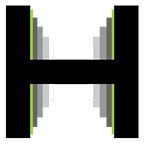Global pollution is one of the major dangers to our world and could pose existential threat to the survival of mankind. In order to raise awareness to this major problem, a group of Stanford journalism students launched a new virtual reality experience called “Ripple: the unintended life of plastics in the sea”. The VR experience features the photography of artist and conservationist Mandy Barker and is viewable at https://rippleplastic.com/.
Ripple’s main idea is to show how ubiquitous, insidious and long-lasting plastic can be in our world by immersing viewers into a galaxy of garbage. Mandy Barker’s photographs are transformed into a VR experience focusing awareness on pollution from plastics in the ocean.
In April of 2018, a team of eight Stanford Journalism students, under the guidance of Professor Geri Migielicz, joined together to create this experience. Barker was supportive of the project from the beginning, excited at the prospect of her work taking on new life and reaching more people through this immersive medium. Barker supplied original files for four of her composite photographs for the project.
The project became a labor of love for Dylan Freedman, who graduated in 2018 from Stanford’s Department of Communication Graduate Program in Journalism. Freedman spent the past year refining techniques to bring the experience to life in Web.VR, a Javascript API that supports virtual reality.
This project was written in A-Frame, a web framework from Mozilla that uses Web.VR, to bring virtual reality to any web device, including laptops, phones, and virtual reality headsets, including Google Cardboard.
“It will be really exciting to see how this new format delivers and connects with people both in the museum and at home on their personal devices,” says Freedman.
Besides designing the experience, Freedman also produced and composed original music for the VR experience.
“Global pollution is one of the largest man-made problems of our time. To be able to report on this issue using new technology and bring to life the stunning visuals of Mandy Barker’s art is a one-of-a-kind journalistic opportunity,” says Freedman. “I hope this experience will not only raise awareness about the worldwide problem of plastic ocean debris but also highlight a new medium for journalists to tackle future issues.”
Other students assisted in “hackathons,” putting the images through Adobe Photoshop, then Blender, a 3D computer graphics software. The team also researched and wrote a script, and recorded narration to guide viewers through the experience.
The virtual reality experience will be part of the Our Plastic Ocean, an Impressions Gallery exhibition, which launched this summer and will tour around the UK through 2020.
